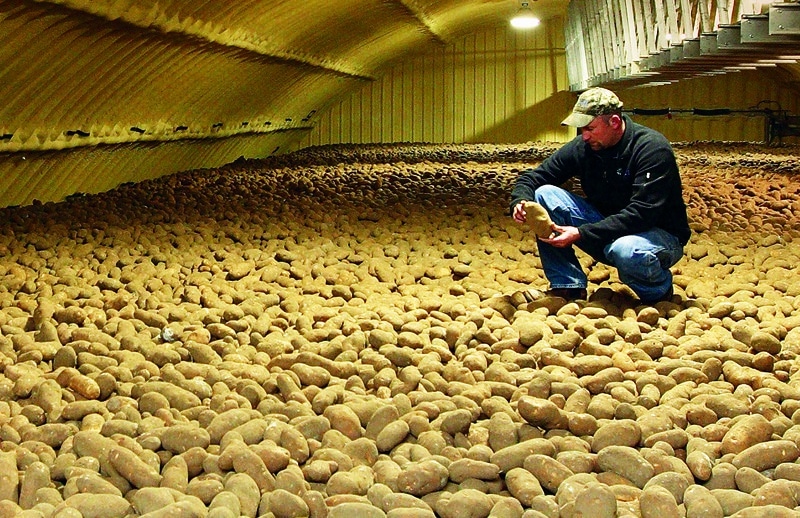You’ve got car insurance, house insurance, hopefully some life insurance, maybe some crop insurance. What about storage-loss insurance? With challenging growing conditions across much of North America, this might be a good year to opt for some extra security.
In years where excellent growing conditions, optimal moisture and ideal harvest conditions translate to unstressed tubers entering storage, your pile might stay perfectly dormant and top-quality with little care from you. Unfortunately, this probably won’t be that kind of year for many farmers.
A hot summer across much of North America means plants have been suffering heat – and in some cases drought – stress. While a lot happens in the last month of potatoes’ growing life, yield projections already suggest total harvest numbers will be significantly down in some regions. Plants stressed enough to drop yield virtually always produce less-than-stable tubers going into storage.
Meanwhile, contract cutting earlier this spring due to COVID-19 means processors are already talking about being short of potatoes next winter. That’s a good thing in terms of salability of tubers but means farmers will want to be especially conscious about preserving full quality and volume to maximize returns and potential bonuses.
What to do? This may be the year to think beyond CIPC. While CIPC is cheap and effective, it has a relatively short application window of between suberization and early in the new year, depending on your market. 1,4DMN (1,4-Dimethylnaphthalene) offers much more application flexibility, allowing producers to support dormancy right from bin closure until a handful of days before packing and shipping.
1,4DMN is the only true dormancy enhancer available on the market in North America. Whereas CIPC exclusively suppresses sprouting, 1,4DMN triggers genes in a potato that keep it dormant, limit its water-loss, and helps to maintain tuber health to prevent fungal attack. Growers report tubers treated with 1,4DMN at bin close-up sweat less, even after being harvested in warm conditions; have less pressure bruise; and shrink less, especially in storages with insufficient humidity.
1,4DMN can immediately help on varieties that are sprouting coming out of the field and does not harm suberization. Treatments can be done at the same time (though not tank mixed) as fogging with a disinfectant. Note that an early treatment of DMN will not last long in storage because of the quantity of fresh air being cycled through for suberization and cooling.
In a great year, treating a pile immediately post-harvest may not be necessary. In a tough year, applying 1,4DMN at bin close-up may be the best insurance investment you choose all storage season.








